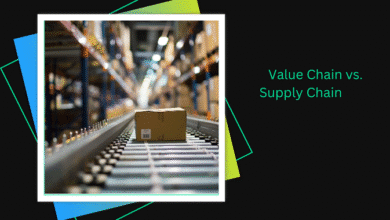Employee Monitoring Tool: Optimizing Productivity and Security in the Modern Workplace

In today’s fast-paced and competitive business environment, organizations are leveraging digital solutions to enhance productivity, maintain security, and streamline operations. Among these tools, Employee Monitoring Software plays a crucial role by providing valuable insights into employee performance and overall operational efficiency. This article delves into the key benefits, features, and best practices for implementing an Employee Monitoring Tool effectively.
What is Employee Monitoring Software?
Employee Monitoring Software is designed to monitor and track employee activities within an organization. This software provides detailed insights into employees’ work habits, application usage, time allocation, and task engagement. Such data helps businesses make informed decisions about productivity, resource allocation, and security.
Organizations use monitoring tools to ensure tasks are completed on time, improve accountability, and protect sensitive data from unauthorized access. Ultimately, a well-integrated Employee Monitoring Tool not only boosts productivity but also helps foster a secure and transparent work environment.
Benefits of Using Employee Monitoring Software
Implementing the right Employee Monitoring Software offers several advantages that align with both organizational and employee interests.
1. Enhanced Productivity
With monitoring software, companies can identify productivity patterns and address time-consuming distractions. The tool provides data on the amount of time employees spend on each task, enabling managers to make adjustments to enhance efficiency.
2. Improved Project Management
Many monitoring tools allow you to manage and track projects effectively. By analyzing real-time data, managers can identify bottlenecks and optimize resource allocation, ensuring projects are completed within deadlines and budget.
3. Increased Security and Data Protection
In addition to productivity tracking, Employee Monitoring Software helps secure sensitive company information by monitoring data access and preventing unauthorized actions. This is especially important in sectors where data breaches can lead to significant financial and reputational damage.
4. Accountability and Transparency
Monitoring software creates a culture of accountability by recording activities and fostering a transparent work environment. Employees become more conscious of their responsibilities and are less likely to engage in unproductive behaviors.
5. Compliance with Industry Standards
Certain industries require organizations to comply with specific standards and regulations. Employee Monitoring Tools help businesses adhere to these requirements by maintaining comprehensive logs of activities, ensuring compliance, and simplifying the audit process.
Key Features of Employee Monitoring Software
Selecting a suitable Employee Monitoring Tool requires an understanding of its core functionalities. Here are some of the most effective features that top monitoring software should offer:
1. Time Tracking
Time tracking helps businesses monitor the amount of time employees spend on various tasks and projects. It also provides insights into individual productivity, identifying areas where time can be optimized.
2. Real-Time Screen Monitoring
Screen monitoring offers live views or screenshots of employees’ screens, allowing managers to observe task engagement and focus levels. This feature is particularly useful for roles that require a high degree of attention to detail.
3. Activity Monitoring and Logging
Activity logging provides a comprehensive record of an employee’s activities, such as applications used, websites visited, and the time spent on each. This information helps in assessing work patterns and identifying potential distractions.
4. Project and Task Tracking
Some tools come with advanced project management capabilities, enabling managers to efficiently manage and track projects. This feature allows for real-time updates on project progress, helping managers address issues proactively.
5. Reporting and Analytics
Analytics and reporting features offer detailed insights into team performance, efficiency, and productivity. These reports help managers make data-driven decisions to optimize workflows, identify trends, and support business objectives.
6. Security Alerts
For security-conscious organizations, monitoring tools with real-time security alerts are essential. These tools monitor user behavior and notify administrators of any suspicious activities, helping prevent data breaches.
7. Customizable Settings
Different organizations have unique requirements, and customizable monitoring settings allow businesses to tailor the software to fit their specific needs. Custom settings help balance productivity monitoring with employee privacy, ensuring compliance with local laws and regulations.
Top Employee Monitoring Tools for Businesses
Here are some of the leading Employee Monitoring Tools available today, each offering unique features tailored to diverse business requirements.
1. Kickidler
Kickidler is a popular employee monitoring tool known for its user-friendly interface and robust feature set. Key features include:
- Real-Time Monitoring: View live employee screens to assess task engagement and productivity.
- Project Tracking: Enables managers to project tracking with ease, ensuring deadlines are met.
- Time Tracking: Monitor the time employees spend on various tasks, allowing for better resource allocation.
- Detailed Reports: Generate insights into productivity trends and identify areas for improvement.
Kickidler’s adaptability and comprehensive features make it ideal for organizations looking to enhance productivity and secure their digital workspace.
2. Teramind
Teramind is known for its focus on security and compliance, making it suitable for industries requiring stringent data protection. Key features include:
- Behavior Analytics: Detect unusual behavior that may indicate potential security threats.
- Data Loss Prevention (DLP): Prevent unauthorized data access and transfers.
- Detailed Reporting: Access activity logs that provide insights into employee productivity and system usage.
- Real-Time Alerts: Receive instant notifications for suspicious activities, enhancing data security.
Teramind’s emphasis on security makes it an excellent choice for industries with strict regulatory requirements.
3. Time Doctor
Time Doctor is a time tracking and productivity monitoring tool ideal for remote and hybrid work environments. Its main features include:
- Automated Time Tracking: Capture time spent on tasks without requiring manual input from employees.
- Project Management Integration: Sync with popular project management platforms for seamless workflows.
- Web and App Usage Tracking: Monitor website visits and application usage to identify potential productivity gaps.
- Distraction Alerts: Receive alerts for activities that may reduce productivity, helping employees stay focused.
Time Doctor’s distraction management and time tracking features are particularly useful for improving focus in remote teams.
Best Practices for Implementing Employee Monitoring Software
Successfully integrating Employee Monitoring Software into your organization requires a strategic approach. Here are best practices for effective implementation:
1. Clearly Define Monitoring Objectives
Identify the goals you want to achieve with the monitoring software. Whether it’s improving productivity, securing data, or managing projects, clearly defined objectives ensure the software’s functionalities are used effectively.
2. Prioritize Transparent Communication
Transparency is essential when introducing monitoring software to your team. Inform employees about the purpose of the tool, the types of data collected, and how it benefits both the organization and the team. This helps alleviate any concerns and fosters trust.
3. Establish Clear Policies
Implementing clear policies outlining acceptable usage and privacy considerations helps employees understand their responsibilities. Policies should detail:
- Scope of Monitoring: Specify which activities will be tracked.
- Data Privacy: Outline how data will be stored and who will have access to it.
- Consequences for Misuse: Define consequences for violating company policies.
Having well-documented policies ensures the monitoring tool is used ethically and transparently.
4. Train Managers and Employees
Provide training to both managers and employees on how to use the monitoring software. Familiarity with the tool enhances its effectiveness and minimizes disruptions during the implementation phase.
5. Regularly Review and Adjust Monitoring Practices
Evaluate the effectiveness of the Employee Monitoring Tool periodically. Use insights from productivity reports and employee feedback to make adjustments, ensuring the tool remains aligned with your business objectives.
Balancing Employee Monitoring and Privacy
While Employee Monitoring Software offers substantial productivity benefits, it’s essential to balance monitoring with respect for employee privacy. Here’s how to achieve this balance:
1. Limit Data Collection to Necessary Information
Collect only the data needed to meet your objectives. Limiting data collection reduces privacy concerns and aligns with data protection regulations.
2. Implement Role-Based Access Control
Restrict access to monitoring data based on roles within the organization. Only authorized personnel should have access to sensitive data, ensuring a high level of data protection.
3. Focus on Aggregate Data for Performance Assessments
Use aggregate data to assess team productivity rather than focusing solely on individual performance. This approach encourages teamwork and minimizes the perception of micromanagement.
4. Ensure Compliance with Data Privacy Laws
Ensure that your monitoring practices adhere to data protection laws like GDPR or CCPA. Compliance not only prevents legal issues but also enhances employee trust.
Future of Employee Monitoring Software
Employee monitoring tools continue to evolve, incorporating technologies such as artificial intelligence and machine learning to enhance capabilities. Key trends in the future of employee monitoring include:
1. AI-Powered Analytics
Artificial intelligence will enable deeper analysis of employee behaviors, identifying patterns that may indicate productivity challenges or potential security risks. AI can also provide predictive insights, helping managers proactively address issues.
2. Enhanced Data Privacy Features
With growing awareness of data privacy, future monitoring tools will likely offer more granular privacy controls, allowing employees to control which data is shared and with whom.
3. Greater Emphasis on Employee Well-being
Monitoring software is expected to include features that track indicators of work-life balance and stress levels, fostering a supportive and healthy work environment.
Conclusion
An effective Employee Monitoring Tool can provide invaluable insights that help businesses optimize productivity, enhance security, and improve project management. By choosing a tool like Kickidler that offers a balanced blend of productivity tracking and security features, organizations can create a transparent and efficient work environment.
Whether you are seeking to manage and track projects, prevent data breaches, or enhance productivity, selecting and implementing the right Employee Monitoring Software is key to meeting your business objectives and fostering a productive workplace.



